When choosing silicone sheets, most people overlook one key factor: the adhesive. It can make or break your entire application.
Silicone sheets come with different adhesive backing options, including acrylic, silicone, and transfer tapes. Each has unique benefits depending on heat, surface type, and durability.
Some applications need high-temperature resistance. Others need strong bonding to tricky surfaces like metal or glass. Understanding the types of adhesive backings will help you make smarter, more cost-effective decisions.
What types of adhesive backings are available?
It’s easy to get overwhelmed when faced with so many adhesive terms—PSA, acrylic, transfer tape, silicone-based. Each sounds good, but what do they really mean?
The main adhesive backings for silicone sheets are pressure-sensitive acrylic, silicone-based adhesives, and double-sided transfer tapes. Each is suitable for different surfaces, temperatures, and environmental conditions.
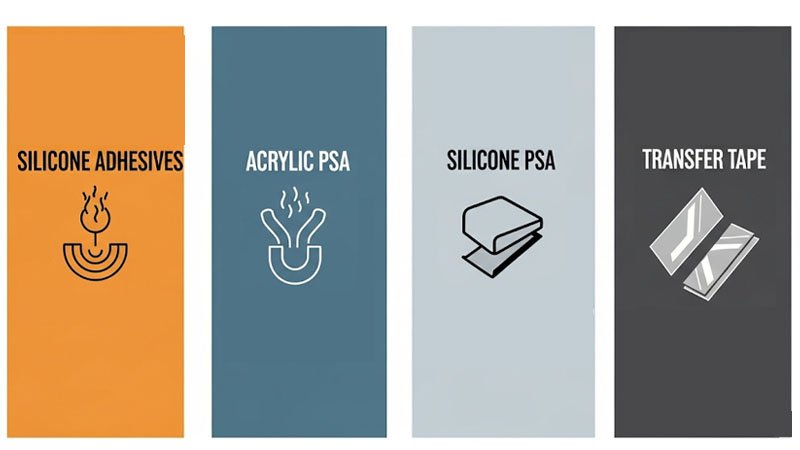
There are three primary adhesive categories used with silicone sheets:
| Adhesive Type | Key Strengths | Common Applications | Limitations |
|---|---|---|---|
| Acrylic PSA | Affordable, bonds to most surfaces | General industrial use, plastics, wood | Limited temperature resistance |
| Silicone PSA | Excellent high-temp resistance, bonds to low-energy surfaces | Electronics, medical, automotive | Higher cost |
| Transfer Tape (Double-Sided) | Flexible, customizable thickness | Sealing, gaskets, cushioning layers | Not suitable for high temps |
Each type has its own chemistry. Acrylic adhesives are more budget-friendly and stick well to metal, plastic, and wood. But they start breaking down at around 150°C. That’s fine for most low-heat industrial settings but risky for electronics or automotive.
Silicone-based adhesives, on the other hand, handle temperatures beyond 200°C. They are also the only option that bonds well to silicone surfaces, which most other adhesives can’t handle due to low surface energy. This makes silicone PSA ideal for silicone-to-silicone applications or extreme environments.
Double-sided transfer tapes aren’t technically “backings” but function similarly. These are used when you need a uniform layer of adhesive on both sides, such as layering gaskets or vibration dampening in devices. They give more flexibility but don’t hold up well in heat.
How does heat resistance affect your adhesive choice?
High temperatures can melt adhesives. If the wrong type is used, your silicone sheet may peel off or degrade over time.
If your application involves high heat, always choose silicone-based adhesive. It resists temperatures up to 260°C, far more than acrylic options.
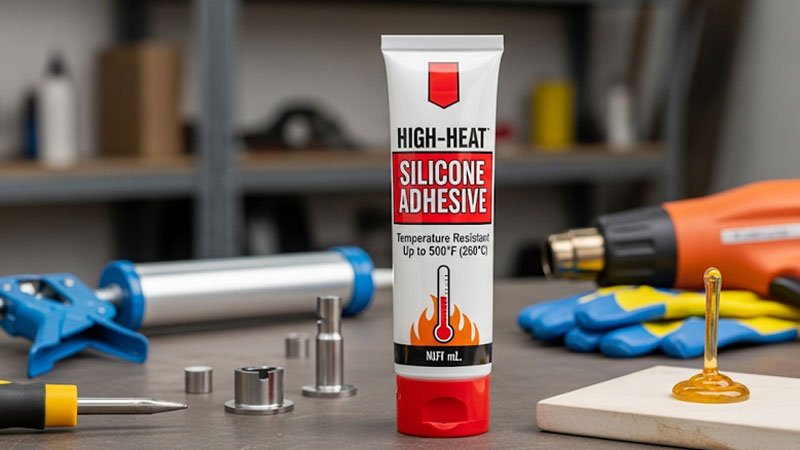
I learned this the hard way. We once chose acrylic adhesive for a sealing application near a hot pipe system. It worked for about a week before the edges began to peel. Eventually, it failed completely and had to be replaced. That project cost more in rework than it would’ve if we chose silicone PSA from the beginning.
Here’s a comparison of heat resistance:
| Adhesive Type | Max Temp Resistance |
|---|---|
| Acrylic PSA | ~150°C |
| Silicone PSA | ~260°C |
| Transfer Tape | Varies by product (~120°C–150°C) |
For any setting involving motors, heating elements, outdoor exposure, or high-friction environments, the only reliable choice is silicone adhesive. It won’t melt, flow, or off-gas under heat. That’s critical for safety and longevity.
Can adhesives stick well to silicone surfaces?
Silicone is notoriously hard to bond. Most adhesives don’t work because silicone repels them.
Only silicone-based adhesives can bond effectively to silicone surfaces. If you need silicone-to-silicone bonding, choose silicone PSA.
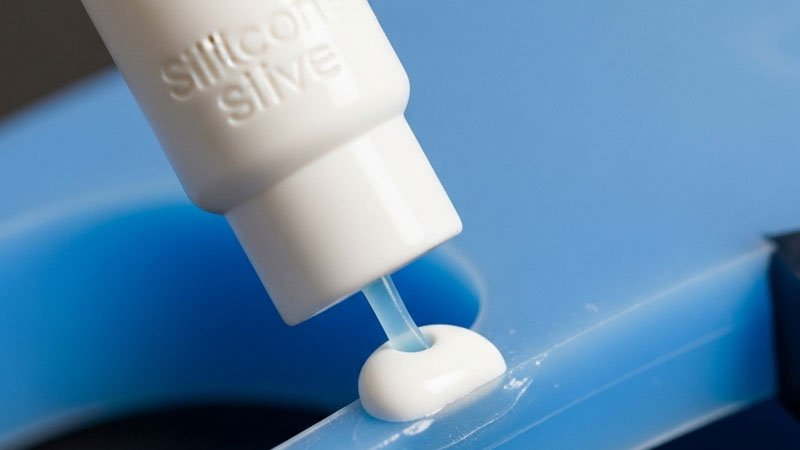
Silicone rubber has low surface energy, meaning it’s difficult for adhesives to create a chemical bond. Acrylics just sit on top and eventually peel off. Even some industrial tapes fail over time.
Silicone adhesives are formulated with similar molecular structures, allowing them to form real chemical bonds with silicone rubber. This compatibility gives long-term bonding strength and resistance to weather, water, and UV.
This is especially useful in baby product manufacturing, where we often use food-grade silicone sheets to create covers or seals. In these cases, the silicone PSA ensures there’s no contamination or adhesive leaching, which would fail health regulations.
What role does surface type play?
Not every surface is the same. Glass, plastic, metal, and painted surfaces each interact differently with adhesives.
Choose your adhesive based on the surface material. Acrylic adhesives work on most plastics and metals, while silicone adhesives work on low-energy surfaces like silicone or PTFE.
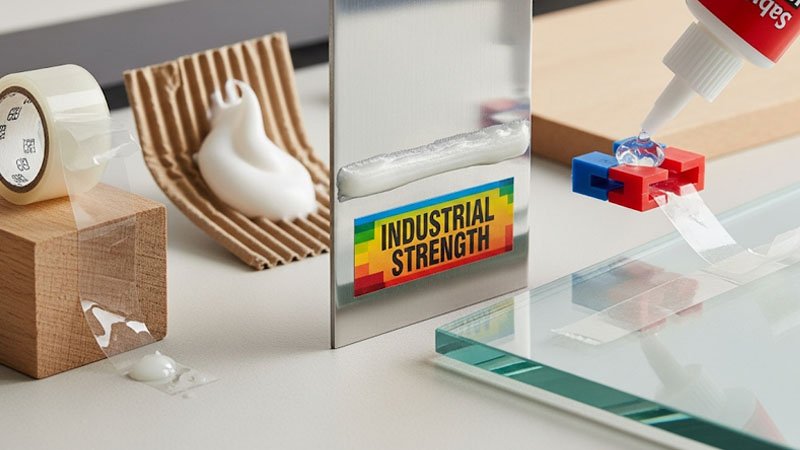
Surface energy is a measure of how “sticky” a material is to adhesives. Metals and hard plastics have high surface energy. That means they hold onto adhesives well. Low-energy surfaces, like polypropylene, PTFE (Teflon), or silicone, are hard to bond without special adhesives.
| Surface Type | Best Adhesive |
|---|---|
| Metal | Acrylic or Silicone PSA |
| Plastic (ABS, PC) | Acrylic PSA |
| PTFE, Silicone | Silicone PSA |
| Glass | Both, depending on temperature |
When in doubt, we always run a peel test—placing a sample adhesive-backed sheet on the surface, waiting 24 hours, and then manually testing the bond. It’s better to know early than risk peeling during actual use.
How do you apply silicone sheets with adhesive?
A good adhesive won’t help if it’s not applied correctly. Improper installation leads to bubbling, weak spots, or early failure.
Apply silicone sheets to clean, dry surfaces. Use pressure and wait 24 hours for full adhesive curing before stressing the bond.
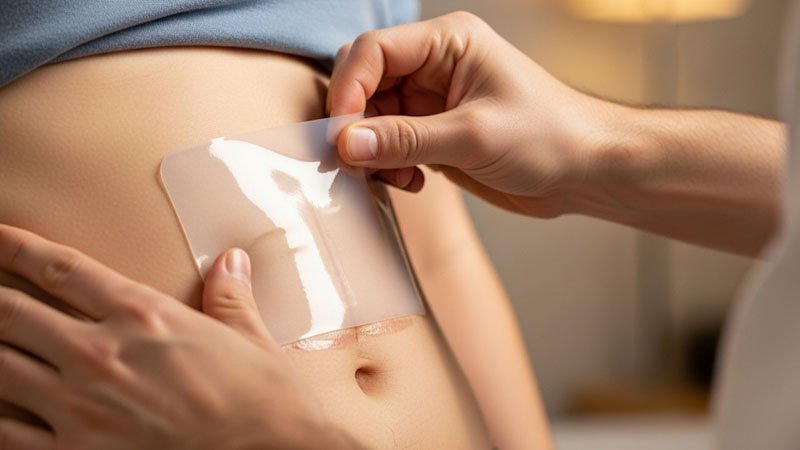
Even the best adhesive will fail if applied incorrectly. Start by cleaning the surface. Remove all oil, dust, or particles using isopropyl alcohol. Allow the area to dry fully. Avoid touching the adhesive side of the sheet.
Peel off the release liner, align the sheet carefully, and press it down starting from one edge to avoid bubbles. Use a roller or hand pressure to activate the pressure-sensitive adhesive (PSA). Many adhesives reach 80% of their full strength within an hour, but full curing typically takes 24–72 hours.
For curved surfaces or tight corners, heat guns can help slightly soften the adhesive and improve conformity—but avoid overheating. Also, store unused adhesive-backed silicone sheets in a cool, dry place to maintain bonding strength.
Is custom adhesive backing worth it?
Some suppliers offer custom adhesive backing options tailored to your design or assembly line. But is the extra cost worth it?
If your project demands specific bonding performance, shapes, or layers, custom adhesive backings are worth the investment. They save time during assembly and reduce failure rates.

We’ve worked with clients who needed adhesive only on selected areas of a silicone gasket. In those cases, we provided kiss-cut silicone sheets with pre-applied adhesives in custom shapes. This sped up their assembly process and reduced the risk of misalignment.
Here’s why custom options help:
- Pre-cut sizes: No need to trim or modify sheets on-site.
- Selective adhesion zones: Apply adhesive only where needed.
- Dual-adhesive options: One side with silicone PSA, one side with acrylic.
- Custom liner types: Easy-peel liners or scored for quick removal.
Of course, custom solutions increase upfront cost and require higher MOQs (minimum order quantities). But in large-scale manufacturing, they reduce labor costs and improve consistency. It’s all about balancing cost with efficiency.
Conclusion
Choosing the right adhesive backing for silicone sheets is critical. The right match ensures safety, durability, and cost savings.